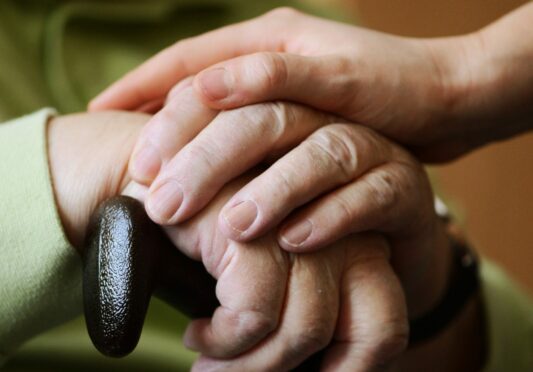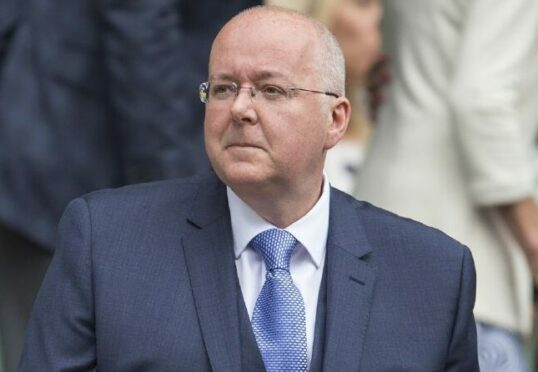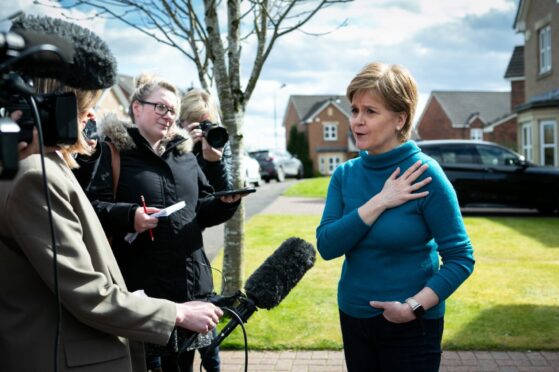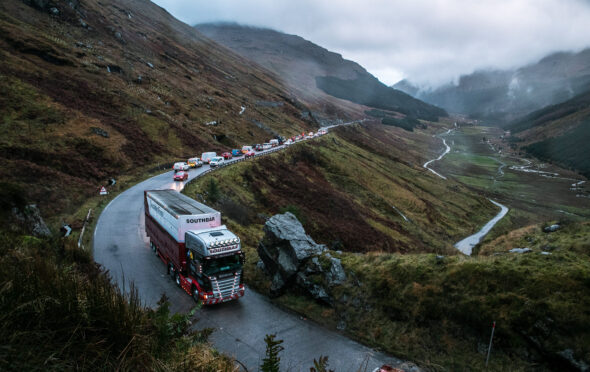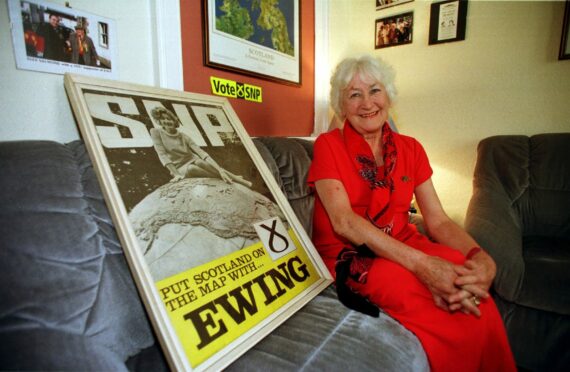
Five decades separate a triumphant Winnie Ewing boarding the London train to the skirl of bagpipes, and SNP buildings raided at dawn to the screech of police meat wagons.
The Cause, as the movement for Scottish self-determination is sometimes known, has had its peaks and troughs. Ewing’s 1967 Hamilton by-election win, a breakthrough in urban Scotland, was an historic high which marked the birth of the modern SNP and the beginnings of a remarkable journey.
No one could have predicted it would take Scotland close to independence or the SNP would eventually dominate a Scottish parliament which Winnie, as Deputy Presiding Officer, declared “re-convened” in 1999.
Nor could they have imagined it fall so low as last week. Whatever the outcome of the police investigations into SNP finances, the suspicions, like those dramatic dawn images, are not easily erased from the public consciousness.
Until the turn of this century, nobody joined the SNP because it was a good career move. The successes of Alex Salmond and Nicola Sturgeon were built on the shoulders of giants – people who – for no reward – organised, leafleted and chapped doors for The Cause.
I saw some of these selfless campaigners in action when I signed up in 1988, keen to knock doors for Jim Sillars in the Govan by-election of that year. We were fired by the injustice of the Poll Tax, the deindustrialisation of the Clyde, and anger at the pressure on many young Scots to move south to find a decent job.
It was not the easiest choice to make when the Conservatives controlled Westminster and the Labour Party machine dominated Scotland. Even in journalism, my chosen career, an affiliation to Labour was seen as perfectly acceptable, indeed a great way to build contacts. Labour controlled all the councils, public boards and many public sector posts.
Being seen as nationalist could invite ridicule or career death.
Now the wheel has turned and the rebels are the establishment. Power, once achieved, is harder to concede but perpetuating power for its own sake inevitably means torpor, decay and maybe even decadence.
An increasing number of SNP politicians, not confined to Kate Forbes supporters, are aghast at the direction the party has taken. A new Save The SNP campaign is needed to unite good people around the party’s founding principles.
Support for independence remains high. But, without a coherent movement to carry it forward, The Cause could be lost for a generation.
Joan McAlpine is a journalist, commentator and ex-MSP

Enjoy the convenience of having The Sunday Post delivered as a digital ePaper straight to your smartphone, tablet or computer.
Subscribe for only £5.49 a month and enjoy all the benefits of the printed paper as a digital replica.
Subscribe